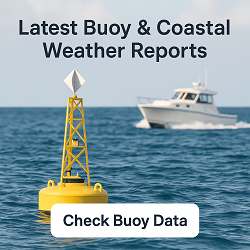Anvik, AK Weather Forecast and Current Conditions
Current Conditions

Feels Like 1°F
at
Point Forecast at a Glance







7-Day Temperature Trend
Week Ahead Summary
Variable high temperatures through the week, ranging from -1°F to 14°F. Some precipitation possible with wintry mix on at least one day.
This Date in Weather History
1926 - Yuma, AZ, was soaked with 1.10 inch of rain, and by the 10th of the month had received 4.43 inches, making it the wettest December of record. The average annual rainfall for Yuma is 3.38 inches.
Anvik, AK 7 Day Weather Forecast Details
Tuesday Dec 2

Night: Snow and freezing rain, becoming all snow after 3am. Areas of blowing snow after 3am. Low around 13. Northeast wind around 25 mph. Chance of precipitation is 90%. Little or no ice accumulation expected. Total nighttime snow accumulation of 1 to 2 inches possible.
Wednesday Dec 3

Day: Snow likely, mainly before 9am. Areas of blowing snow before 3pm. Cloudy, with a high near 14. Northeast wind around 25 mph. Chance of precipitation is 60%. New snow accumulation of less than a half inch possible.

Night: A 20 percent chance of snow before 9pm. Partly cloudy, with a low around 0. Northeast wind 25 to 30 mph decreasing to 15 to 20 mph after midnight.
Thursday Dec 4

Day: Sunny, with a high near 4. Northeast wind 10 to 15 mph.

Night: Mostly clear, with a low around -5. Northeast wind around 10 mph.
Friday Dec 5

Day: Sunny, with a high near 0.

Night: Clear, with a low around -4.
Saturday Dec 6

Day: Sunny, with a high near -1.

Night: Partly cloudy, with a low around -6.
Sunday Dec 7

Day: Sunny, with a high near 2.

Night: Mostly clear, with a low around -4.
Monday Dec 8

Day: Sunny, with a high near 2.

Night: Mostly clear, with a low around -8.
Tuesday Dec 9

Day: Sunny, with a high near -2.
About Anvik, AK
Content from Wikipedia, licensed under CC BY-SA 3.0.
How We Provide Better Local Weather
Current conditions: We use the nearest available station to your location - including professional MESONET/MADIS and local weather stations - often miles closer than regional airports.
Forecasts: National Weather Service point forecasts predict for your specific area, not broad regional zones, making them far more relevant to your location.



